France

France facts and history in brief
Pont du Gard
Excerpted from Wikipedia, the free encyclopedia.
The Pont du Gard is an aqueduct in the south
of France constructed by the Roman Empire, and located
near Remoulins, in the Gard département.
Name
Pont du Gard means literally bridge of the Gard (river).
The Gard river, which has given its name to the Gard
département, does not actually exist under this name.
The river, formed by many tributaries, several of which
are called Gardon, is itself called Gardon until its
end.
Description
Built on three levels, the Pont is 49 m high, and the
longest level is 275 m long.
Lower level: 6 arches, 142 m long, 6 m thick, 22m high
Middle level: 11 arches, 242 m long, 4 m thick, 20 m
high
Upper level: 35 arches, 275 m long, 3 m thick, 7 m high
On its first level, it carries a road and at the top
of the third level, a water conduit, which is 1.8 meters
(6 feet) high and 1.2 meters (4 feet) wide and has a
gradient of 0.4 percent.
History
The Pont du Gard is thought to have been built around
19 BC.
Built to carry the water across the small Gardon river
valley, it was part of a nearly 50 km (31 mi) aqueduct
that brought water from springs near Uzès to the Roman
city of Nemausus (Nîmes).
The full aqueduct had a gradient of 34 cm/km (1/3000),
descending only 17 m vertically in its entire length
and delivering 20,000 cubic meters (44 million gallons)
of water daily.
It was constructed entirely without the use of mortar.
The aqueduct's stones – some of which weigh up to 6
tons – are held together with iron clamps.
The masonry was lifted into place by block and tackle
with a massive human-powered treadmill providing the
power for the winch.
A complex scaffold was erected to support the aqueduct
as it was being built.
The face of the aqueduct still bears the mark of its
construction, in the form of protruding scaffolding
supports and ridges on the piers which supported the
semicircular wooden frames on which the arches were
constructed.
It is believed to have taken about three years to build,
employing between 800 and 1,000 workers.
From the 4th century onwards, its maintenance was neglected,
and deposits filled up to two thirds of the conduit
space.
By the 9th century, it became unusable, and the people
of the area started using its stones for their own purposes.
However, the majority of the Pont du Gard remains remarkably
intact.
From the Middle Ages to the 18th century, the aqueduct
was used as a conventional bridge to facilitate foot
traffic across the river.
The pillars of the second level were reduced in width
to make more room for the traffic, but this jeopardized
the stability of the structure.
In 1702 the pillars were restored to their original
width in order to safeguard the aqueduct.
In 1743, a new bridge was built next to the arches of
the lower level, so that the road traffic could cross
on a purpose-built bridge.
The aqueduct was restored in the 18th century, by which
time it had become a major tourist sight, and was restored
again in the reign of Napoleon III in the mid-19th century.
The outstanding quality of the bridge's masonry led
to it becoming an obligatory stop for French journeymen
masons on their traditional tour around the country
(see Compagnons du Tour de France), many of whom have
left their names on the stonework.
Markings left by the original builders can also be seen,
indicating the positions in which the dressed stones
were to be placed: for instance, FRS II (standing for
frons sinistra II, or "left front 2").
The interior of the Pont du Gard's conduit, now closed
to the public.
The Pont du Gard was added to UNESCO's list of World
Heritage Sites in 1985.
In 1998 the Pont du Gard was hit by major flooding which
caused widespread damage in the area.
The road leading up to it and the neighbouring facilities
were badly damaged, although the aqueduct itself was
not seriously harmed.
The French Government sponsored a major redevelopment
project in conjunction with local sources, UNESCO and
the EU which concluded in 2000, pedestrianising the
entire area around the aqueduct and greatly improving
the visitor facilities, including establishing a museum
on the north bank.
The project has been criticized for its cost (€32 million)
and for the perceived loss of natural beauty of the
surrounding landscape and area.
One side-effect is that it is no longer possible to
walk through the conduit at the top of the aqueduct.
However, the redevelopment has ensured that the area
around the Pont du Gard is now much quieter due to the
removal of vehicle traffic, and the new museum provides
a much improved historical context for visitors.
The Pont du Gard is today one of France's top tourist
attractions, with 1.4 million visitors reported in 2001.
External links

For a more information about
Pont_du_Gard see Wikipedia, the free encyclopedia

This page was retrieved and condensed from
(http://en.wikipedia.org/wiki/Pont_du_Gard)
December 2005
All text is available under the terms of the
GNU Free Documentation License (see
Copyrights for details).
About Wikipedia
Disclaimers
This information was correct in December 2005. E. & O.E.

Well! What can I say about Pont du Gard? In 2005
Hui Chin and I visited this awesome structure.
This huge, - well there are many huge structures around,
- but what is amazing, when it was built, without modern
tools and without mortal, it was carrying water for
over 30 km, without leaking. (Hey!!! No mortar, no rubber,
and no tricks, unbelievable!!)
Those Romans were very busy all over the place, building
aquaducts, roads, amphitheatres etc and on a very large
scale too.

You can click on these photos for an enlargement.
2005
 |
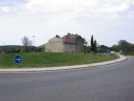 |
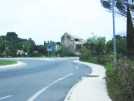 |
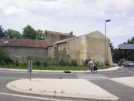 |
| Pont du Gard |
Pont du Gard |
Pont du Gard |
Pont du Gard |
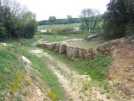 |
 |
 |
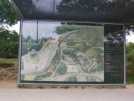 |
| Pont du Gard |
Pont du Gard |
Pont du Gard |
Pont du Gard |
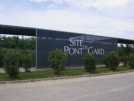 |
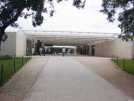 |
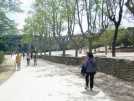 |
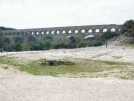 |
| Pont du Gard |
Pont du Gard |
Pont du Gard |
Pont du Gard |
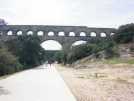 |
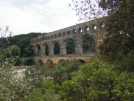 |
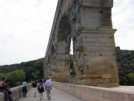 |
 |
| Pont du Gard |
Pont du Gard |
Pont du Gard |
Pont du Gard |
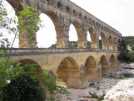 |
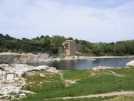 |
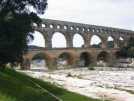 |
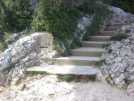 |
| Pont du Gard |
Pont du Gard |
Pont du Gard |
Pont du Gard |
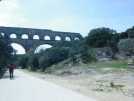 |
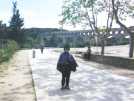 |
 |
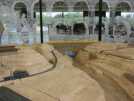 |
| Pont du Gard |
Pont du Gard |
Pont du Gard |
Pont du Gard |

Site
Index
Back to Top
Photos Index
Thanks for coming, I hope you
have enjoyed it, will recommend
it to your friends, and will come
back later to see my site developing
and expanding.
I'm trying to make my pages
enjoyable and trouble free for everyone,
please let me know of any mistakes
or trouble with links, so I can
fix any problem as soon as possible.
These pages are best viewed with monitor
resolution set at 640x480 and kept simple
on purpose so everyone can enjoy them
across all media and platforms.
Thank you.
You can e-mail me at
Webmaster

|